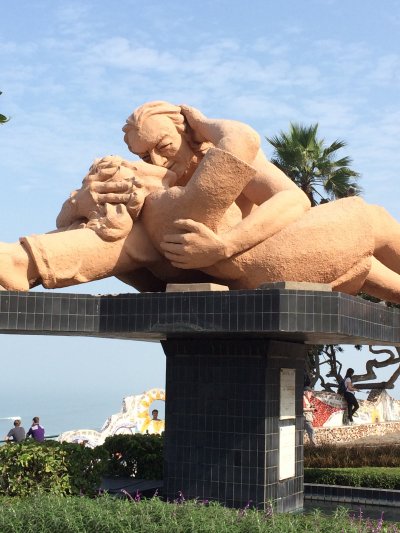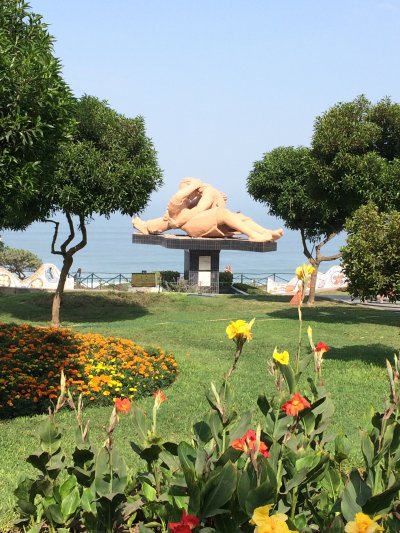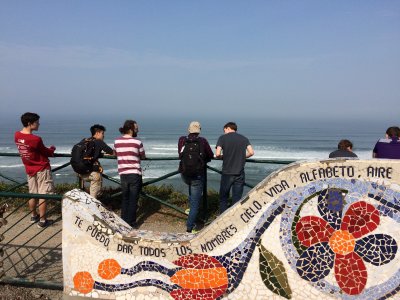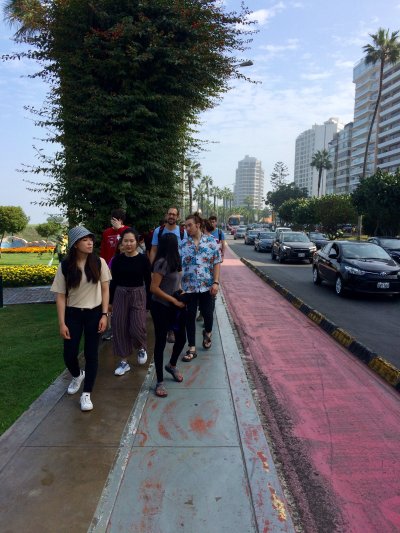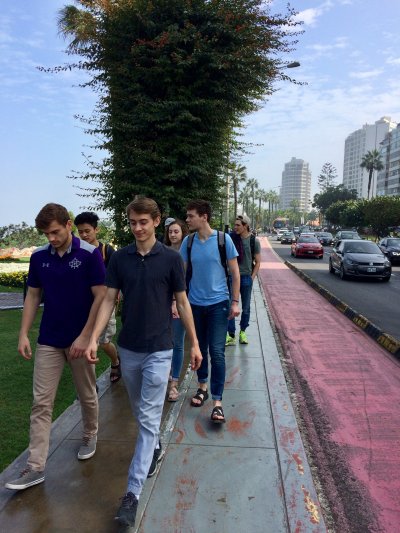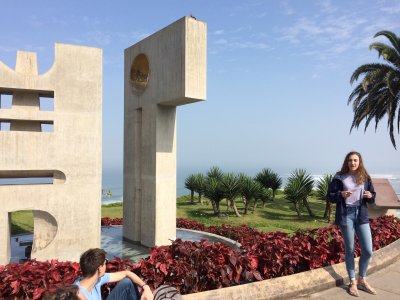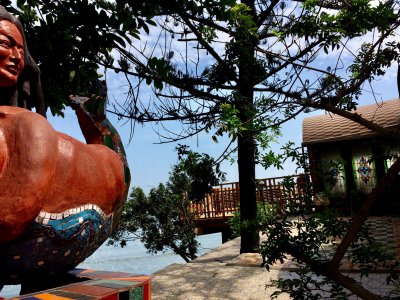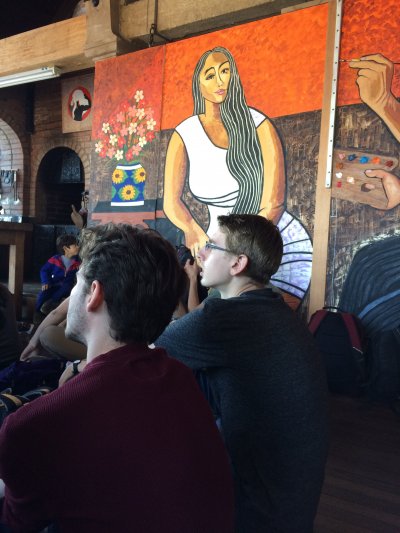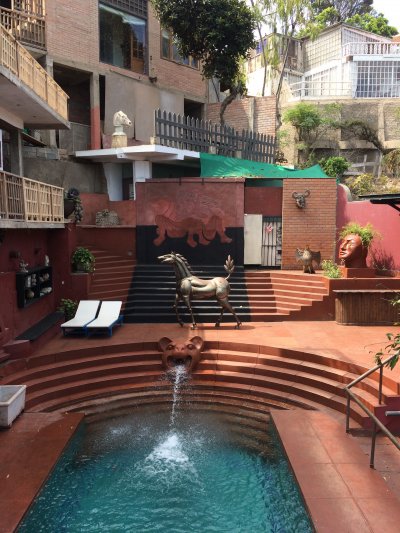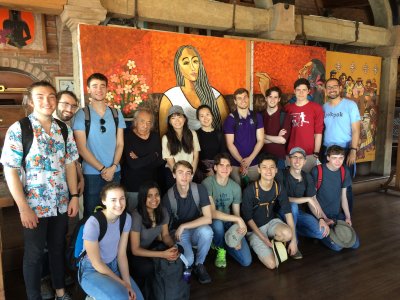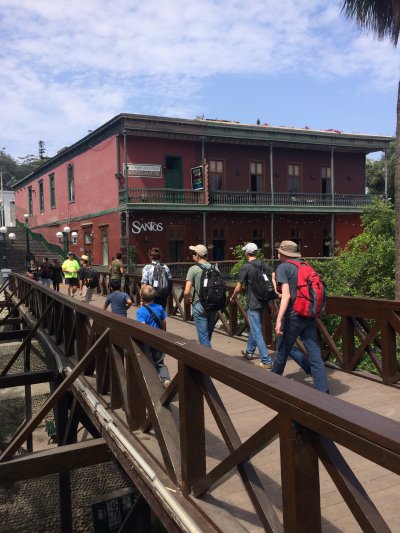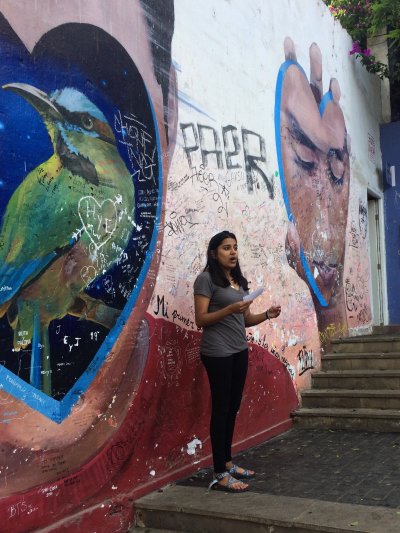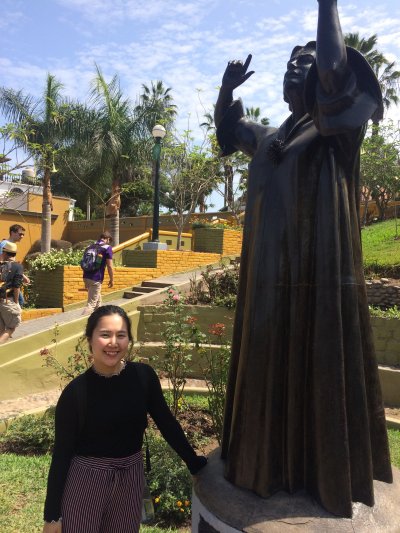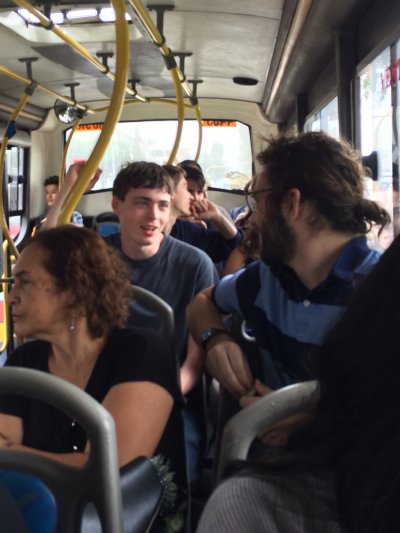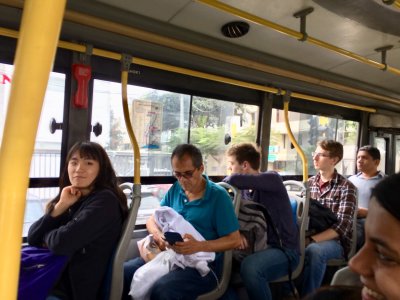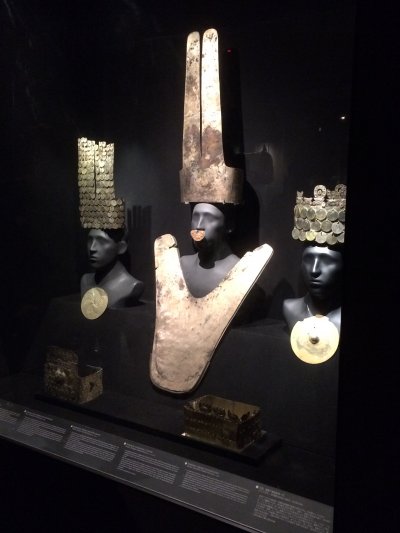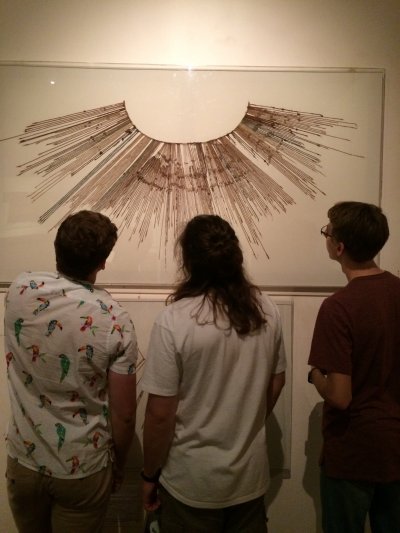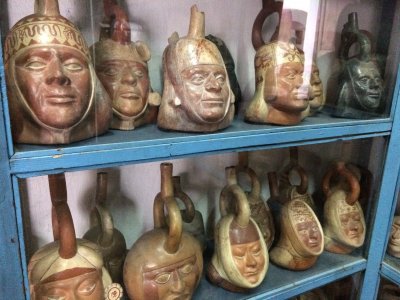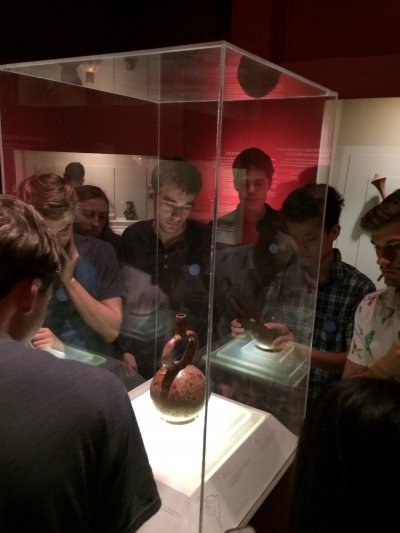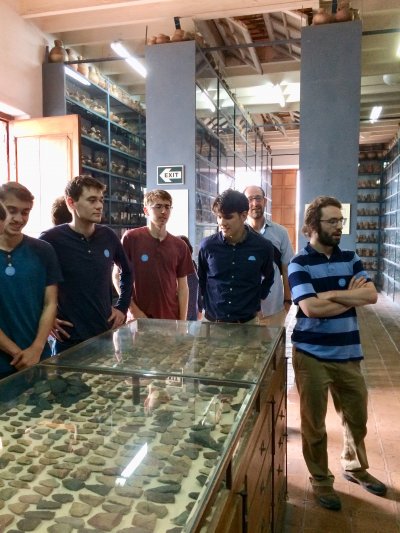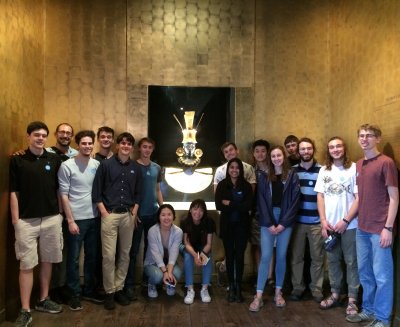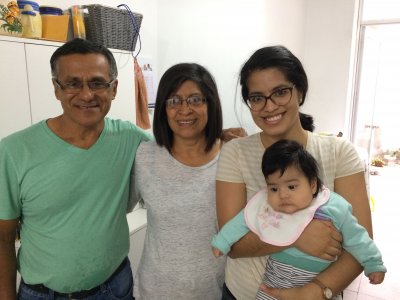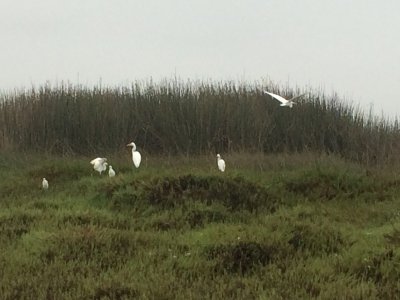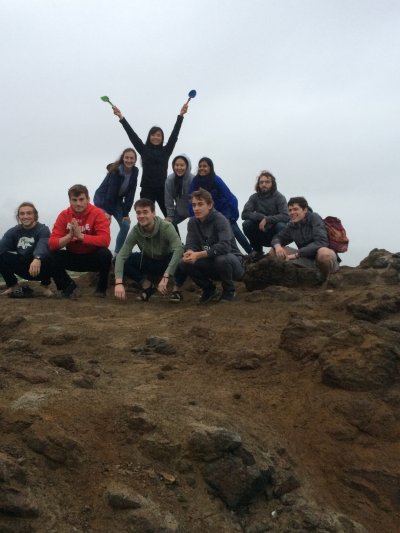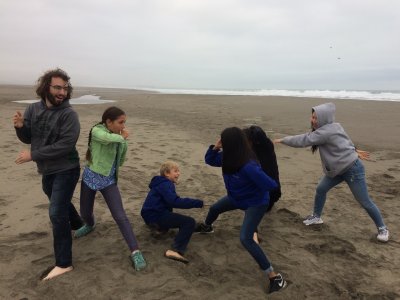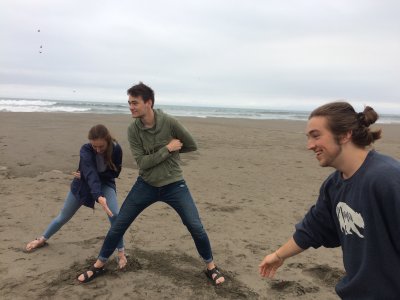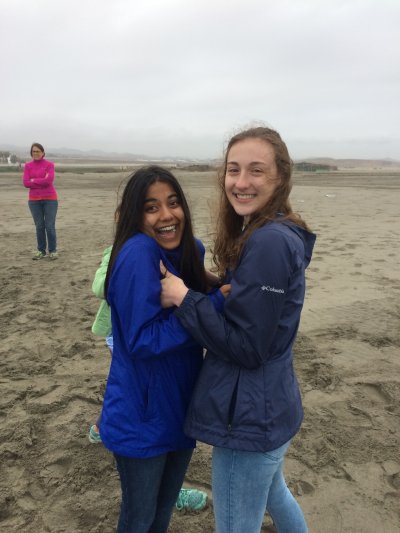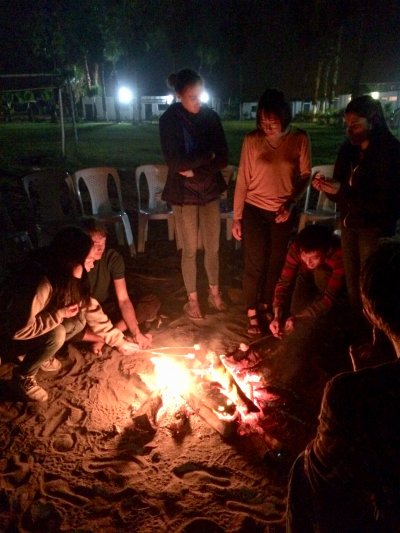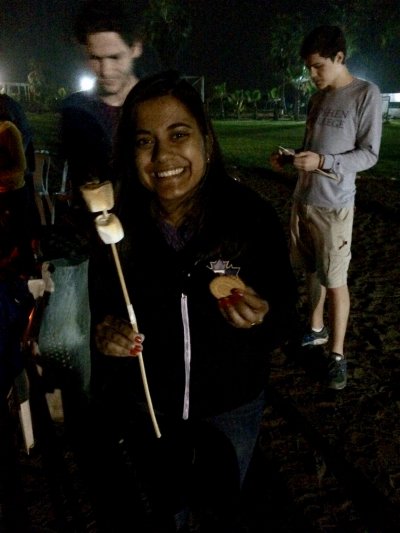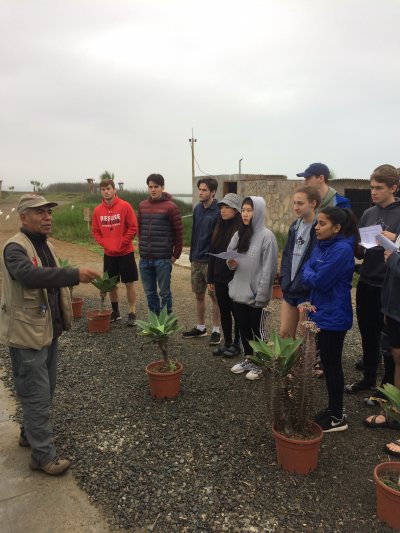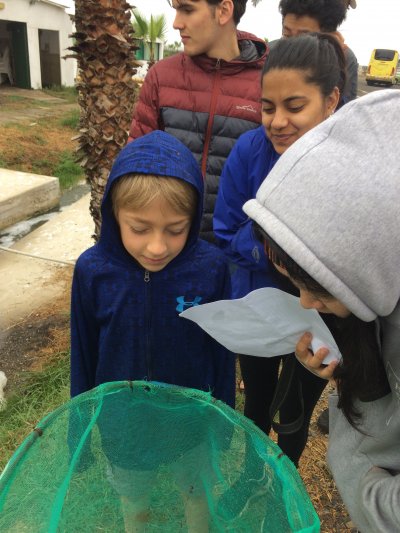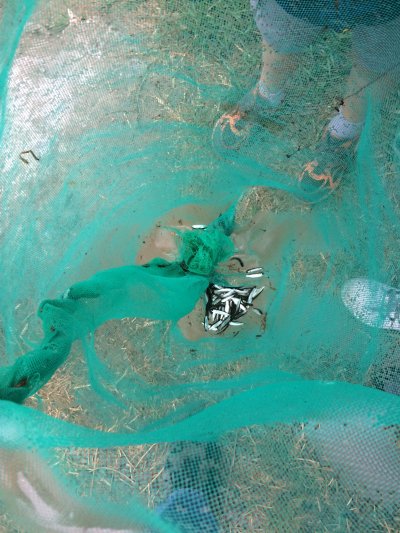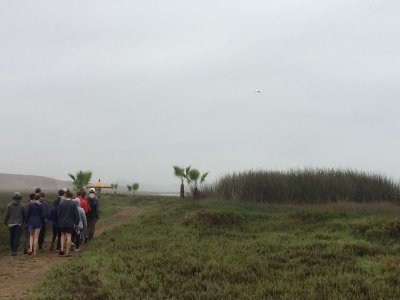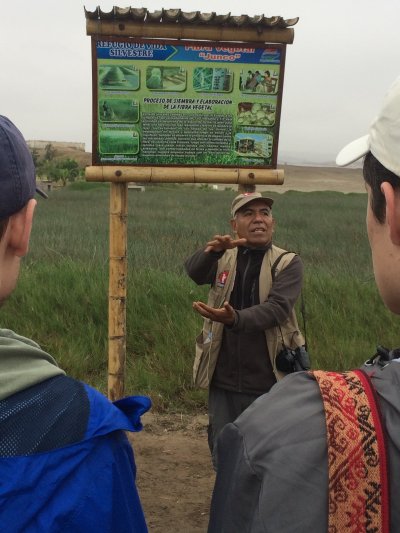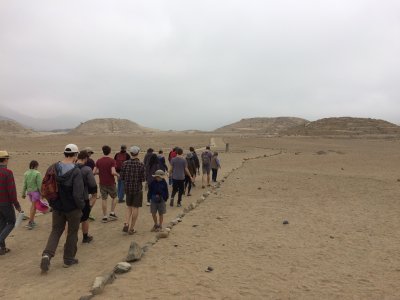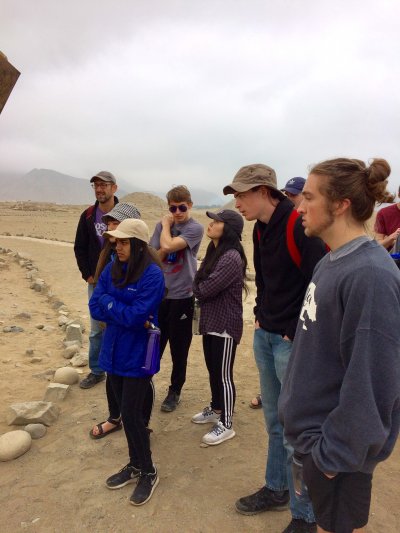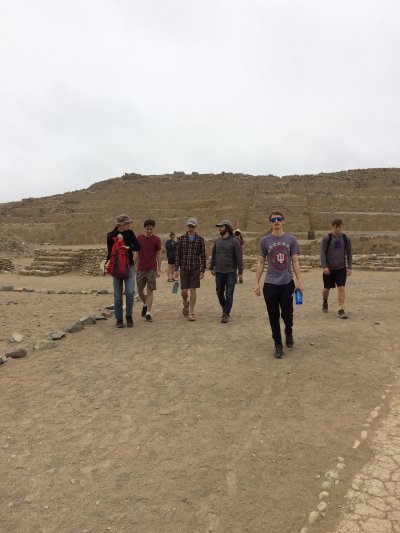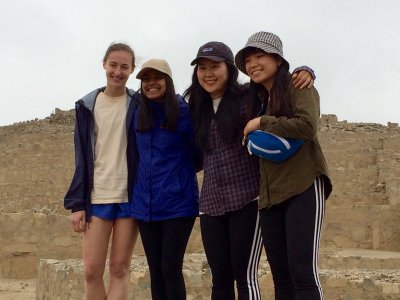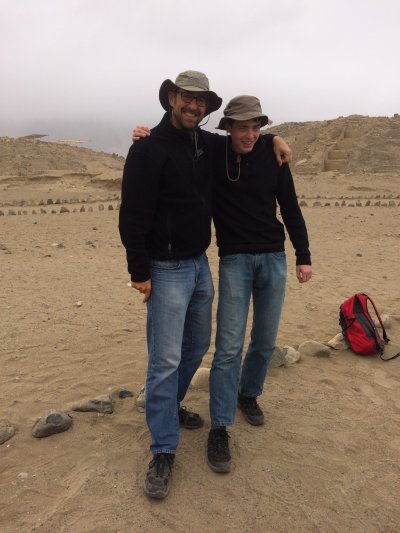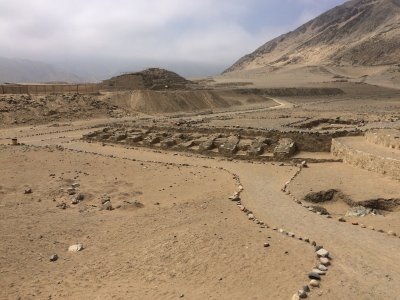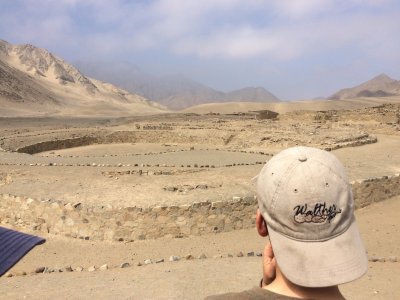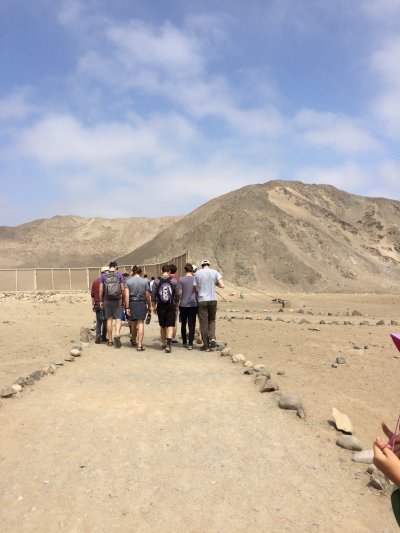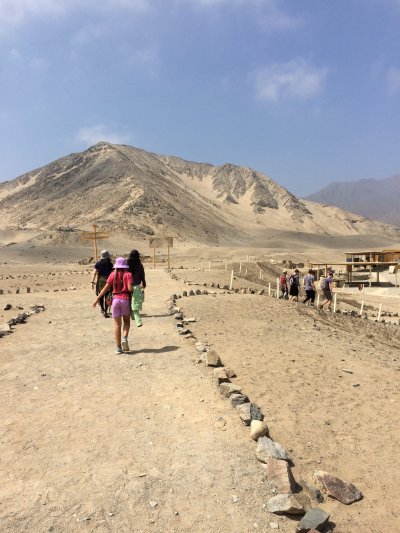Week Two: Art, Aves and Artifacts
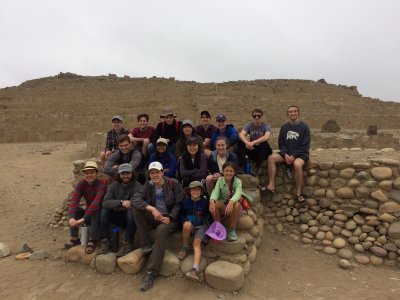
This week we were outside the classroom as much as in. We started off the week with a trip to the Barranco district of Lima, where we visited the home of artist Victor Delfín. We also visited Museo Larco, a private museum that features a large collection of ceramics, textiles, and metal work from the many indigenous cultures that thrived in Perú for thousands of years before the Spanish conquest. We capped off our week with our first overnight field trip. We took the bus five hours north on the Pan-American highway to visit Albufera del Medio Mundo, a protected wetland, and the Sacred City of Caral, an ancient archaeological site.
After departing from the church on Thursday morning, it took us two hours just to reach the northern city limits of Lima. The shanty towns built onto the sandy hills eventually gave way to miles and miles of bare sand dunes. Our view out the bus windows was covered in mist for much of the trip, but behind the haze we could still see shacks peeking out along the route and rows and rows of chicken houses belonging to Perú’s largest chicken producers.
We made a stop for lunch in the town of Chancay, about half-way to our destination. Chancay is one of the areas where rivers coming down from the mountains allow for irrigation and farming in this coastal desert. We ate a delicious lunch of arroz con pollo at the home of Hortensia and Juan Carlos Dulanto, who have served as a host family for past GC students during the service portion of SST.
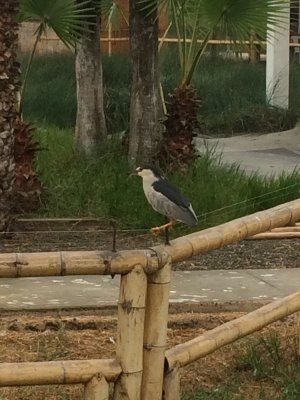
In the late afternoon, we arrived at Albufera del Medio Mundo. Our lodging for the night was a set of cottages beside the albufera, a lagoon that has a mix of both salty and fresh water, and is the central feature of this biodiverse wetland which is home to 8 different habitats. After arriving, we had time to explore the area around the lagoon, play ping pong, kick the soccer ball around, and head down to the ocean until the sun set. After a supper of choripan (sausage sandwich), potatoes and choclo (corn on the cob), we built a fire. As we sat around the fire, we talked about the Incan night sky and shared some of our own stargazing experiences. Afterward, we enjoyed some improvised S’mores.
On Friday, we got up early for a bird walk with Rolando, the resident environmentalist, and learned more about the local ecosystem. The albufera has 41 species of resident birds, and hosts 22 migratory birds, as well as 3 birds from the high Andes. We saw over 15 different types of birds, both large and small, on our walk along the lagoon.
Following our walk, we were off to our next destination – the Sacred City of Caral. Caral is the oldest center of civilization in the Americas. Carbon dating of objects found at the site put its development sometime between 3000-1800 B.C. which means it was a thriving society at roughly the same time the Egyptian pyramids were being built. Caral is 14 miles inland from the coast and is situated on a desert terrace, looking over the green Supe River valley. This site only began to be studied in depth in 1994, so archaeologists are still actively working on the site and the natural area surrounding the site is still fairly undeveloped. Six large pyramidal structures, remnants of personal dwellings, and large communal sites such as an amphitheater, make up the site. Our hike afforded views of the surrounding hills and the green river valley on the other side of the Supe River, where many of the same crops are still cultivated today that were cultivated 5,000 years ago. It was nice to be in a wide-open space after several weeks in the close quarters of Lima.
On the bus ride home, students (and directors) had ample time to catch up on their sleep, chat, and process their first two weeks in Perú. It has been a full and thought-provoking two weeks, with more field trips, both in and out of Lima, coming up next week.
